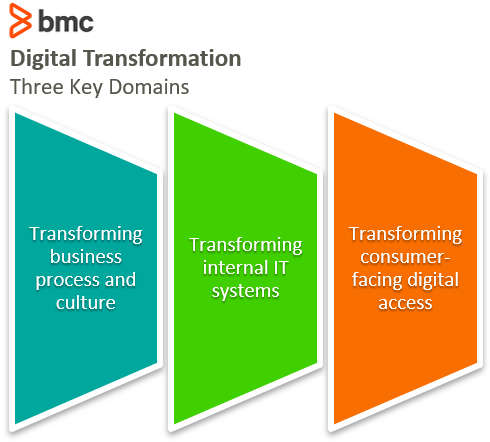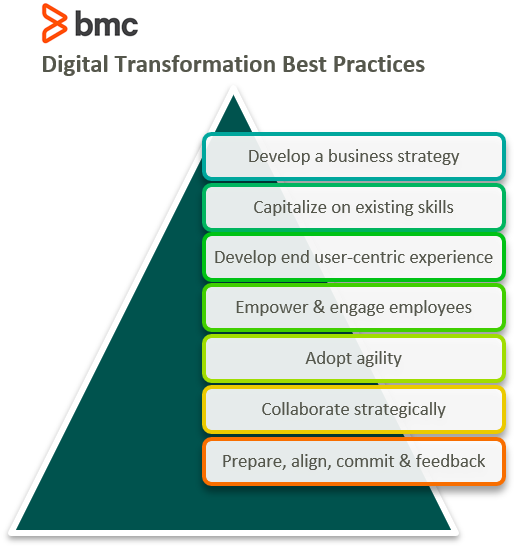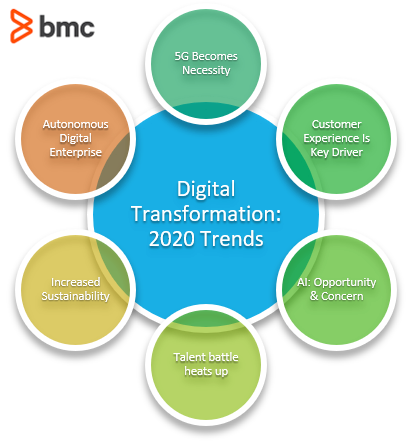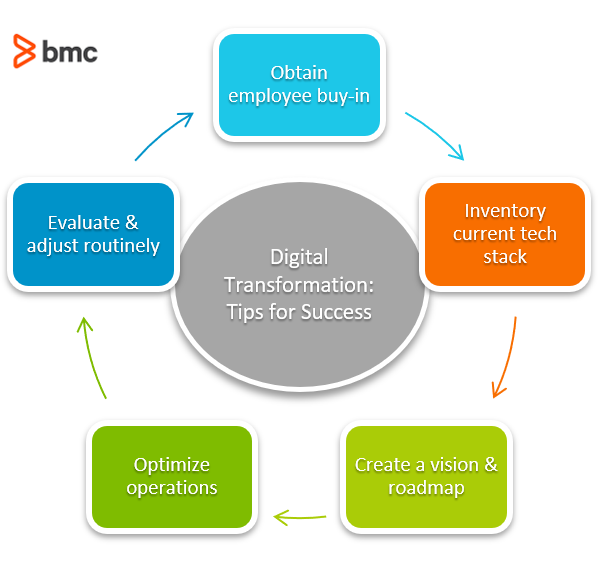Businesses are at a critical juncture: adopt and adapt technology to meet the 24×7, anytime, anywhere demands of customers, employees, and partners. Or risk becoming obsolete.
With new demands on business, more moving parts than before, and the need for delivery speed without sacrificing quality and security, the old ways of managing and using technology only go so far.
A new approach is needed. An approach that’s real-time, intuitive, automated, secure, open, and—most likely—relies on multi-cloud services to enable it. To stay competitive, traditional businesses must evolve practices and processes through digital transformation.
So, what exactly is digital transformation? And how can the modern enterprise achieve it?
We’ve put together a comprehensive guide on digital transformation so help you understand what it is, why it is important, and how organizations can successfully transition to it. This guide will cover:
Let’s get started!
What is digital transformation?
Sometimes shorted to DX, digital transformation is the integration of digital technology into all areas of the business.
While this might sound simple enough, the term is much more than a straightforward integration of the latest and greatest tech in the workplace. Instead, digital transformation is a complete culture and mindset shift in how an organization both operates and delivers value to customers.
Digital transformation describes the dramatic ways in which businesses are changing and adapting in order to meet the requirements of the era—one in which we face major changes in the way technology is created, managed, analyzed, and consumed.
The digitalization of business is a paradigm shift happening in concert with the age of “more”—more people, using more technology, from more locations, on more devices, for more of the time.
(Understand what Industry 4.0 means for businesses today.)
This might be an easier process for younger companies born during the tech era. But for organizations that have long-standing business processes or simply never needed to rely on technology, this shift is significant and intimidating.
IT professionals are witnessing the impact of digital transformation from a unique perspective—they’re seeing it up close and personal.
The proliferation of technology means there’s more complexity to manage, and the elevated role of technology in businesses means the impact and outcome of the services IT provides have never been more visible or more valued. For example:
- Mobile devices and the apps they run are fueling new expectations from employees, who want self-service and on-demand options to work.
- Cloud computing has redrawn traditional boundaries with new models of procurement, deployment, support, and management.
- Business infrastructure and machinery, not traditionally considered IT, are becoming smarter, network-enabled, and part of an ever-expanding Internet of Things (IoT).
As a result, priorities in IT are shifting and a balance between new methods and traditional approaches needs to be struck to manage the sheer scale of the digital transformation challenge.
Digital transformation is no longer an option. Undergoing DX is becoming a necessity, especially after the global pandemic that upended business as we know it. In fact, according to the 2020 Pandemic Business Impact Survey conducted by data research giant IDG, the dependence on digital technologies for companies has never been more crucial.
With so many relying on technology for work, school, and to stay connected with family, this key strategic initiative is proving to be on the forefront for organizations who’ve yet to start their own transformation.
Domains of digital transformation
If the all-encompassing nature of digital transformation feels a bit overwhelming, we don’t blame you. Luckily, we can break down digital transformation into three key areas:

When we look at DX through these three areas, it might start to feel a little more tangible.
(Explore how to transform each of these areas.)
Creating a digital transformation strategy
IT is pivotal to the success of an effective digital transformation program. With so much dependence on technology for the future success of the business, IT finds itself in the tricky position of excelling every dimension.
Innovative services that give the business a competitive edge also need to be rock-solid, cost-efficient, and secure. They should be simple to audit, provide business insights, and continuously improve to meet business goals.
For many, this introduces a tension between the need to transform the business through innovation, and the less glamorous work of keeping the lights on and having an effective operating platform. It’s necessary to define a foundation for digital transformation that allows IT to manage the current and future complexities that digital transformation presents.
(Read our Innovation in the Enterprise series.)
Digital transformation best practices
So, you’re convinced it’s time to change. But where do you start?
These will look different for each industry and company, there are some general guidelines when looking at best practices for adopting digital transformation:

Create the right business strategy
The first step in the process is to establish concrete and realistic goals for the overall digital strategy. Start with understanding your organization’s current state of digital maturity, and then outlining where you want to go.
Use a digital transformation framework
A digital transformation framework is a tool that guides all departments and job levels through the journey. When executed correctly, it helps to:
- Ensure no area of the business is left unattended during periods of change.
- Keep all parties aligned to the overall vision of the business.
Successful frameworks enable the business strategy while providing roadmaps that allow an organization to evolve and succeed in the rapidly changing market conditions. These frameworks do this by providing a way to:
- Create tangible benchmarks, meaningful metrics, and clear indications of progress
- Pinpoint areas that require more attention or can be utilized for further growth.
Utilize current skills and team members
Hiring outside consultants might be an efficient option for some organizations, but you might risk getting crucial buy-in from internal employees.
For many organizations, taking advantage of current employees is beneficial: these are the people already aware of unique business challenges you’re your company is facing. (Your current employees are the very same people that keenly understand what areas need change immediately.)
(Consider designating Chief Transformation Officer.)
Understand end user wants and needs
Certainly, digital transformation is going to greatly affect your company. Its overall success, however, depends on your end users. Are they on board with these changes? Are they adopting the technology and services as you transform?
It’s important to understand the wants and needs of customers. What are their specific challenges? What solutions do they prefer? What channels do they use?
(Consider digital transformation trends for ideas, too.)

Design an engaging employee experience
The next step is to focus on how to create an initiative that is going to engage and empower team members.
By establishing strong governance controls, providing solutions that can help make manual tasks easier, and offering improvements they’re specifically seeking, staff are more likely to not only buy-in to the new transformation, but flourish.
Collaborate strategically
Many businesses have successfully achieved digital transformation. Many trusted advisors have experience in how to achieve this successfully. Utilize these partnerships in order to transition more effectively, reaching out to technology vendors and other partners in similar business markets and industry verticals.
Of course, well-earned knowledge is available in media too: from whitepapers and blogs like this, to our round-up of essential digital transformation books.
Evaluate and realign
As the transformation begins, take plenty of time to listen to employees and customers in what is working—and what isn’t. Things may need to change to follow the market and there might be better ways to approach tasks depending on the specific business.
Be open to making changes according to certain performance indicators and metrics. View any transformation as an ongoing process of continual improvement.
(See the metrics & KPIs that can inform your DX success.)

Digital transformation for the modern enterprise
Successful digital transformation is within reach. By following the best practices and leaning on the skills and knowledge of current team members, adopting digital transformation can prove to be seamless and successful.







